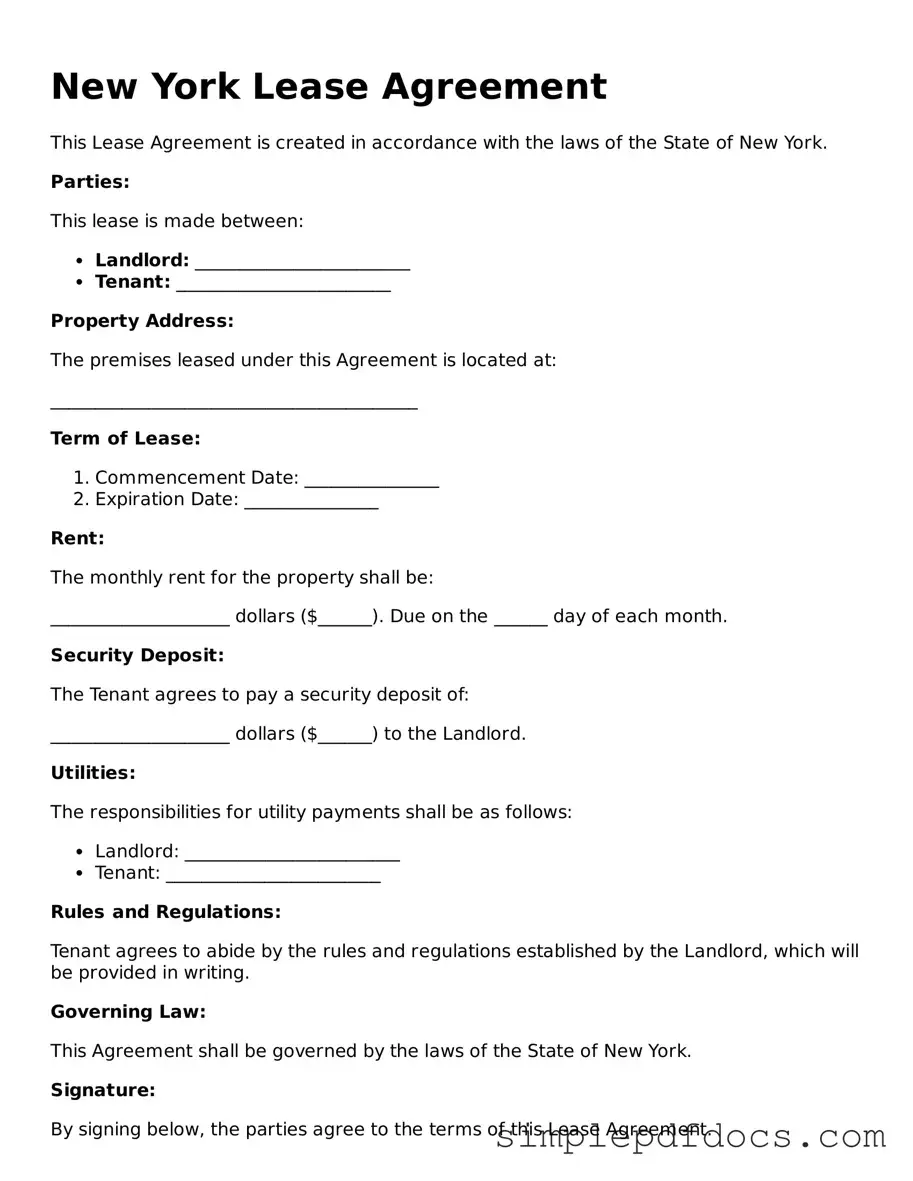Legal Lease Agreement Document for the State of New York
A New York Lease Agreement is a legal document that outlines the terms and conditions between a landlord and tenant for renting residential or commercial property in New York. This agreement serves to protect the rights and responsibilities of both parties, ensuring a clear understanding of the rental arrangement. Understanding this form is essential for anyone entering into a lease in New York.
Get Document Here
